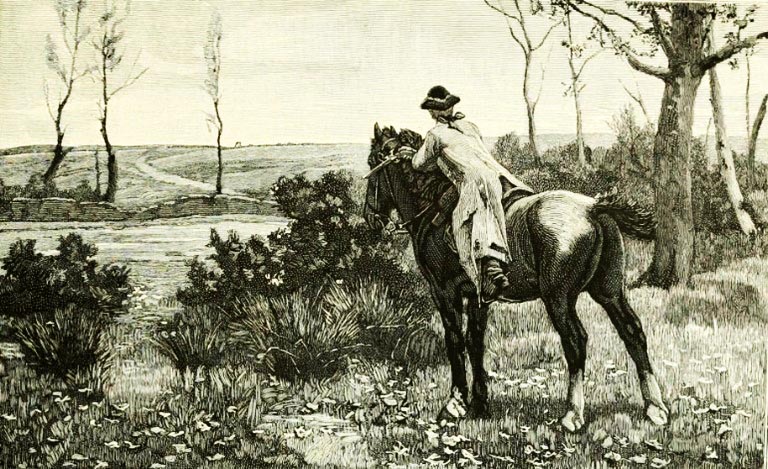There are numerous legends of highwaymen who terrorised travellers across the country, but were they all real, heinous criminals with little regard for their victims, or merely figments of creative folklore? Locally, there were the tales of Bendigo Mitchell, who was alleged to have plied his trade along the turnpike road from Warwick to Banbury in the eighteenth century, robbing travellers at Harbury, Chesterton, Tachbrook, Oakley Wood and Warwick.
According to legend, Bendigo would wait on his horse ‘Old Rose’, known as ‘Skater’, hidden behind Harwoods House by the Banbury roundabout at Chesterton, waiting for his victims. It was said that he nicknamed his horse Skater as it had helped him escape his pursuers by skating across ice on the mill ponds at Chesterton. The nearby crossroads at Harbury Lane on the Fosse Way are known locally as ‘Bendigo Mitchell Crossroads.’
Accounts of his death vary. The most common is that he was captured, tried at Warwick Assizes and hanged near Cape Road in 1776 at the site of the present Sainsbury’s car park, witnessed by some ten thousand people. Other tales suggest he was hanged in 1772 and another that he was lynched at a barn in Waggerland Wood near Oakley Wood. There was also a story that he was apprehended near Moreton Morrell and hanged with a companion in 1798, and another rumour suggests that he was drowned in the mill pond at Chesterton and buried at the Harbury Lane crossroads. Whatever one believes, there is an image of Bendigo painted on the door of the Black Horse Inn at Saltisford, Warwick. Is this where he was based?
Perhaps the fullest press account of his life and death was published across the country in 1904 under the heading: ‘A Warwickshire Knight of the Road.’ The story related how he lived at a tavern at Bishop’s Tachbrook where coaches made regular stops to change horses. Bendigo was in league with the innkeeper, who informed him of any guests who were worth robbing, the coach drivers and a serving girl who would signal to him with a sheet from a window when any coach was leaving. Bendigo would be waiting a short distance away on ‘Old Rose’ at a small spinney where the roadway narrowed. He had trained the horse to ‘straddle’ the road, forcing the coach to stop. The spoils from his victims would be shared out between the conspirators.
When his crimes drew unwanted attention, he would move around, travelling to Gloucester, the Cotswolds, Hereford and Shropshire. According to another story, it was whilst travelling home after one of his journeys that he was apprehended by two horsemen whom he tried to rob near Barford Bridge. Little did he know they were an advance guard of troops. The story continues that he was tried and hanged at Rugby, his body being later gibbeted near Warwick. To add to the myth, it was said that an old gypsy woman stole his body for use in her magical practices.
Truth or legend? Certainly his ‘life’ provides an imaginative tale of folklore which really cries out for evidence. However, there are records at Harbury of a Bendigo Mitchell later in the nineteenth century, and in the records at Warwick there is a trial in 1818 where a Bendigo Mitchell was accused of theft but discharged. Often a child would be named after his father, so who knows?

The Highwayman by Arthur Lemon: Grosvenor Gallery, 1884, Magazine of Art. Image in the public domain.
Southam Heritage Collection is located in the atrium of Tithe Place opposite the Library entrance. Opening times Tuesday, Thursday, Friday and Saturday mornings from 10am to 12 noon. To find out more about Southam’s history, visit our website www.southamheritage.org telephone 01926 613503 or email southamheritage@hotmail.com You can also follow us on Facebook.

Leave A Comment